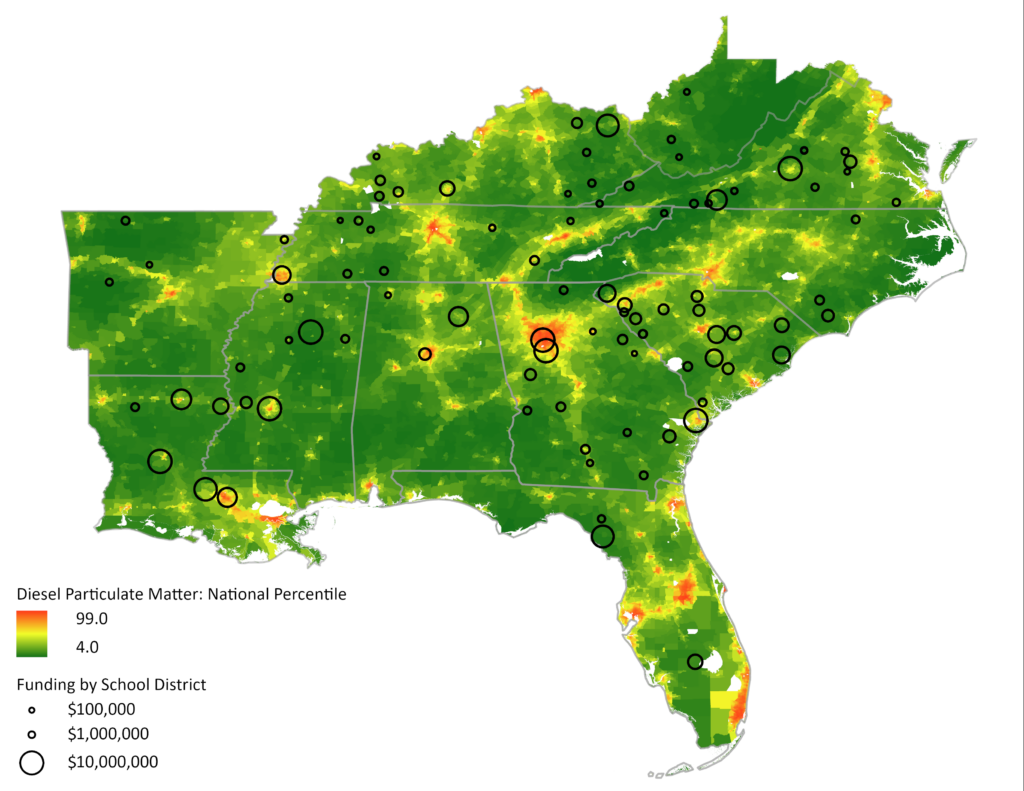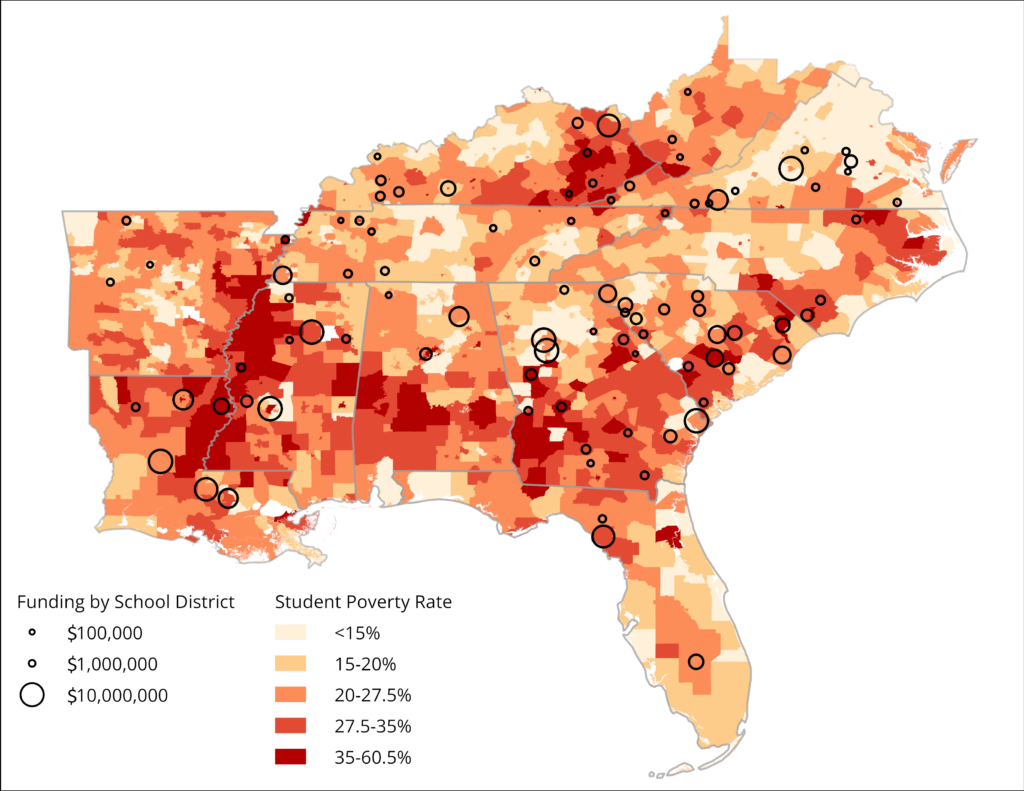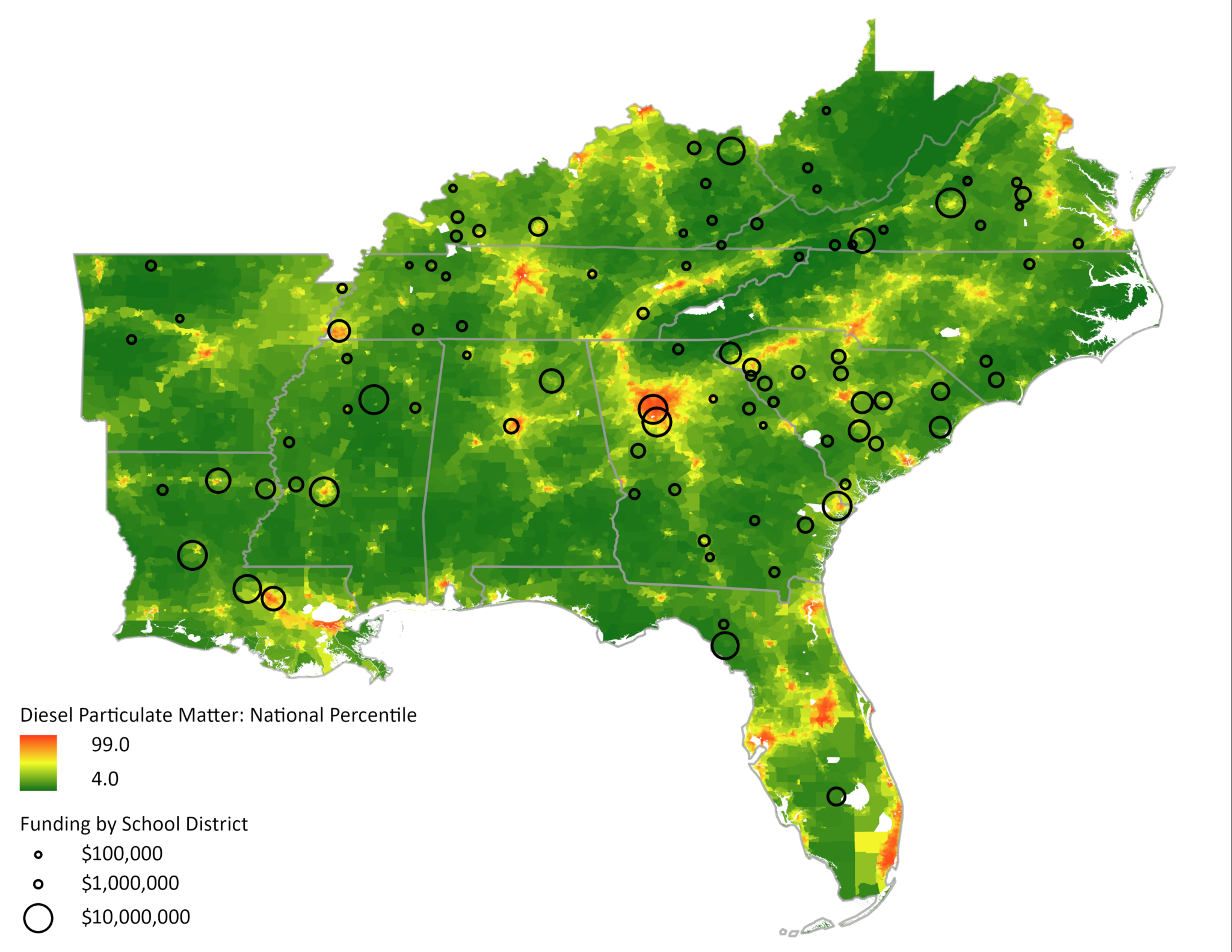Month: September 2023
Map of the Month – September
Grace Parker

Map: Southeast Energy Efficiency Alliance

Map: Southeast Energy Efficiency Alliance
The EPA’s Clean School Bus Program aims to reduce greenhouse gas emissions and exposure to air pollution by replacing older school buses with low-emission and zero-emission models. Has that funding reached the communities most impacted by the harmful effects of diesel school buses? Diesel buses produce diesel particulate, which has been linked to an increased risk of asthma and cancer. A part of the Bipartisan Infrastructure Law, the Clean School Bus Program provides funding to school districts to purchase new low-emission and zero-emission buses. This funding supports a global reduction of greenhouse gas emissions, local air quality improvements, and health benefits to nearby communities.
This month’s maps show that the school districts that were awarded program funding in 2023 are generally more rural, have high student poverty rates and lower levels of diesel particulate, especially compared to more urban districts. The EPA prioritizes funding for rural school districts, high-need local education agencies, and schools that serve residents of Native American lands. High-need local education agencies include districts where 20 percent or more of students served are from low-income families. The student poverty map shows that most of the funding went to these districts. The Clean School Bus Program largely supports schools that have smaller budgets and serve students from lower-income communities.
This month’s maps reveal a tension between funding districts that have the most difficulty paying for clean school buses and funding districts with the highest diesel particulate pollution. However, we can target funding to areas that need support to overcome both of these challenges, like New Orleans. Although a district with similar needs in Birmingham received a $3.6 million grant, New Orleans districts did not. School districts seeking cleaner air and better health for their communities need additional outreach and technical assistance to support their funding applications to the Clean School Bus Program. By focusing on districts that face multiple obstacles to their achieving their goals, we can deepen the impact of this historic and critical funding.


